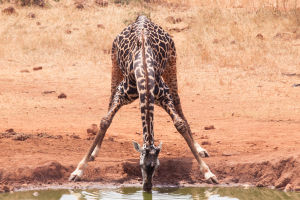Dinosaurs are among the most fascinating creatures that once roamed Earth. Their existence spanned millions of years, and they played a vital role in shaping the history of life on our planet.
In this article, we’ll delve into the world of dinosaurs, uncovering their origin, their diverse species, and their impact on modern culture. So, let’s journey back in time and explore the creatures that once dominated Earth!
The Rise of Dinosaurs
Dinosaurs first appeared about 230 million years ago during the Triassic period, a time when life on Earth was still evolving rapidly. These creatures emerged after a significant event that marked the end of the Permian period, leading to an explosion of life forms known as the "Triassic Explosion." Over time, dinosaurs grew into the dominant land animals, eventually replacing many other species and ruling the planet for approximately 135 million years.
Two Major Dinosaur Groups
Dinosaurs can be divided into two primary groups: Saurischia and Ornithischia. Saurischia included the mighty theropods and the long-necked sauropods, while Ornithischia comprised the herbivorous dinosaurs with beaks. Each group had unique characteristics, from large predators like Tyrannosaurus rex to plant-eaters like Triceratops. Understanding these groups helps us appreciate the incredible diversity that existed within the dinosaur kingdom.
Dinosaurs’ Extinction
Around 66 million years ago, at the end of the Cretaceous period, a mass extinction event wiped out most of the dinosaurs. The cause of this extinction is still debated, but many scientists believe it was triggered by a massive asteroid impact, volcanic activity, and climate changes. However, despite the extinction of non-avian dinosaurs, birds, which evolved from small theropods, survived and continue to thrive today, making them the only living descendants of dinosaurs.
Dinosaur Fossils and Their Discovery
The discovery of dinosaur fossils has been a game-changer in the field of paleontology. In 1822, the first dinosaur fossil, Iguanodon, was found in England, and soon after, fossil hunters began unearthing more dinosaur bones across the globe. These fossils provided vital clues about the anatomy, behavior, and lifestyle of these ancient creatures. Museums around the world began displaying these fossils, making dinosaurs a central part of scientific and public interest.
Dinosaurs in Popular Culture
Over time, dinosaurs transitioned from being mere scientific curiosities to icons of popular culture. Thanks to movies, books, and even toys, dinosaurs captured the imagination of people everywhere. Films like "Jurassic Park" and "Jurassic World" brought these creatures to life on the big screen, thrilling audiences with their realistic depictions. Even today, dinosaurs are often featured in children's literature, video games, and theme park attractions, ensuring their continued presence in the public's mind.
The Evolution of Our Understanding of Dinosaurs
Our understanding of dinosaurs has evolved dramatically over the years. Initially, scientists believed that dinosaurs were slow-moving, cold-blooded creatures. However, more recent discoveries, such as the finding of feathered dinosaurs in China and Mongolia, have shown that many dinosaurs were much more dynamic and closely related to birds than previously thought. This has led to the belief that dinosaurs were warm-blooded, social animals, challenging the old perceptions of them as sluggish, cold-blooded reptiles.
The Enduring Legacy of Dinosaurs
Dinosaurs were more than just ancient creatures; they were an essential part of Earth's history and evolution. From their incredible diversity to their dramatic extinction, they left a lasting legacy that continues to fascinate and inspire people worldwide. As we uncover more fossil evidence and advancements in paleontology, our understanding of these amazing creatures will only continue to grow. For now, we can continue to marvel at the impact dinosaurs have had on our world, both in science and in culture.
Lykkers, thank you for joining us on this thrilling journey through time! Dinosaurs might be long gone, but their story is far from over. Stay curious, and keep exploring the wonders of the past!
Dinosaurs 101 | National Geographic
Video by National Geographic


